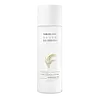What's inside
What's inside
 Key Ingredients
Key Ingredients

 Benefits
Benefits

 Concerns
Concerns

No concerns
 Ingredients Side-by-side
Ingredients Side-by-side

Water
Skin ConditioningPEG-8
HumectantGlycerin
HumectantDipropylene Glycol
HumectantGlycyrrhiza Glabra Root
Skin ConditioningOryza Sativa Bran Oil
EmollientSphingolipids
EmollientOryza Sativa Bran Extract
Skin ConditioningRice Ferment Filtrate
Skin ConditioningHyaluronic Acid
HumectantHoney
HumectantCynara Scolymus Leaf Extract
Skin ConditioningLactic Acid
BufferingHydroxyethyl Urea
HumectantGlycyrrhizic Acid
HumectantPolyglyceryl-10 Oleate
Skin ConditioningLecithin
EmollientButylene Glycol
HumectantPhenoxyethanol
PreservativeMethylparaben
PreservativeWater, PEG-8, Glycerin, Dipropylene Glycol, Glycyrrhiza Glabra Root, Oryza Sativa Bran Oil, Sphingolipids, Oryza Sativa Bran Extract, Rice Ferment Filtrate, Hyaluronic Acid, Honey, Cynara Scolymus Leaf Extract, Lactic Acid, Hydroxyethyl Urea, Glycyrrhizic Acid, Polyglyceryl-10 Oleate, Lecithin, Butylene Glycol, Phenoxyethanol, Methylparaben
Water
Skin ConditioningOryza Sativa Extract
AbsorbentDipropylene Glycol
HumectantPropanediol
Solvent1,2-Hexanediol
Skin ConditioningNiacinamide
SmoothingCentella Asiatica Extract
CleansingFicus Carica Fruit Extract
HumectantNelumbium Speciosum Flower Extract
Skin ConditioningUlmus Davidiana Root Extract
Skin ConditioningAmaranthus Caudatus Seed Extract
Skin ConditioningHydrogenated Lecithin
EmulsifyingCentaurea Cyanus Flower Water
Skin ConditioningGlycerin
HumectantDiphenyl Dimethicone
EmollientTriethylhexanoin
MaskingPolyglyceryl-10 Myristate
Skin ConditioningAcrylates/C10-30 Alkyl Acrylate Crosspolymer
Emulsion StabilisingButylene Glycol
HumectantTromethamine
BufferingDisodium EDTA
Ceramide NP
Skin ConditioningEthylhexylglycerin
Skin ConditioningWater, Oryza Sativa Extract, Dipropylene Glycol, Propanediol, 1,2-Hexanediol, Niacinamide, Centella Asiatica Extract, Ficus Carica Fruit Extract, Nelumbium Speciosum Flower Extract, Ulmus Davidiana Root Extract, Amaranthus Caudatus Seed Extract, Hydrogenated Lecithin, Centaurea Cyanus Flower Water, Glycerin, Diphenyl Dimethicone, Triethylhexanoin, Polyglyceryl-10 Myristate, Acrylates/C10-30 Alkyl Acrylate Crosspolymer, Butylene Glycol, Tromethamine, Disodium EDTA, Ceramide NP, Ethylhexylglycerin
 Reviews
Reviews

Ingredients Explained
These ingredients are found in both products.
Ingredients higher up in an ingredient list are typically present in a larger amount.
Butylene Glycol (or BG) is used within cosmetic products for a few different reasons:
Overall, Butylene Glycol is a safe and well-rounded ingredient that works well with other ingredients.
Though this ingredient works well with most skin types, some people with sensitive skin may experience a reaction such as allergic rashes, closed comedones, or itchiness.
Learn more about Butylene GlycolDipropylene Glycol is a synthetically created humectant, stabilizer, and solvent.
This ingredient helps:
Dipropylene glycol is technically an alcohol, but it belongs to the glycol family (often considered part of the ‘good’ alcohols). This means it is hydrating and gentle on skin unlike drying solvent alcohols like denatured alcohol.
As a masking agent, Dipropylene Glycol can be used to cover the smell of other ingredients. However, it does not have a scent.
Studies show Dipropylene Glycol is considered safe to use in skincare.
Learn more about Dipropylene GlycolGlycerin is already naturally found in your skin. It helps moisturize and protect your skin.
A study from 2016 found glycerin to be more effective as a humectant than AHAs and hyaluronic acid.
As a humectant, it helps the skin stay hydrated by pulling moisture to your skin. The low molecular weight of glycerin allows it to pull moisture into the deeper layers of your skin.
Hydrated skin improves your skin barrier; Your skin barrier helps protect against irritants and bacteria.
Glycerin has also been found to have antimicrobial and antiviral properties. Due to these properties, glycerin is often used in wound and burn treatments.
In cosmetics, glycerin is usually derived from plants such as soybean or palm. However, it can also be sourced from animals, such as tallow or animal fat.
This ingredient is organic, colorless, odorless, and non-toxic.
Glycerin is the name for this ingredient in American English. British English uses Glycerol/Glycerine.
Learn more about GlycerinWater. It's the most common cosmetic ingredient of all. You'll usually see it at the top of ingredient lists, meaning that it makes up the largest part of the product.
So why is it so popular? Water most often acts as a solvent - this means that it helps dissolve other ingredients into the formulation.
You'll also recognize water as that liquid we all need to stay alive. If you see this, drink a glass of water. Stay hydrated!
Learn more about Water